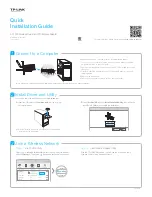
20
www.cooperbussmann.com/wirelessresources
Cooper Bussmann 245U-E Wireless Ethernet Modem & Device Server User Manual
Rev Version 2.19
is dropped. Whenever a client is not connected to an access point, it will cyclically scan all available channels for a
suitable access point.
Roaming Clients
Clients can roam within a system, but if the link to the access point fails or the radio signal level becomes too
weak it will scan for beacons and connect to an access point (provided the SSID and any encryption methods,
keys are compatible). If there are multiple access points, it will select the connection with the best signal level. This
functionality permits a client to have mobility while maintaining a link with the most suitable access point.
LED Indication
The following table details the status of the indicating LEDs on the front panel under normal operating conditions.
LED Indicator
Condition
Meaning
OK
Green
Normal operation.
OK
Flashing Red / Green
Module boot sequence.
Radio RX
Green flash
Radio receiving data (good signal strength).
Radio RX
Red flash
Radio receiving data (low signal strength).
TX/LINK
Green
Radio connection established.
TX/LINK
Red flash
Radio transmitting.
RS-232
Green flash
Data sent from RS-232 serial port.
RS-232
Red flash
Data received to RS-232 serial port.
LAN
ON
Link established on Ethernet port
LAN
Flash
Activity on Ethernet port.
RS-485
Green flash
Data sent from RS-485 serial port.
RS-485
Red flash
Data received to RS-485 serial port.
DIO
Green
Digital input is grounded.
DIO
Red
Digital output is active.
DIO
Off
Digital output off and input is open circuit.
The Ethernet RJ45 port incorporates two indication LEDs. The Link LED comes on when there is a connection on
the Ethernet port, and will blink off briefly when activity is detected on the Ethernet port. The 100-MB LED indicates
that the connection is at 100 MBit/sec. The 100-MB LED will be off for 10 MB/sec connection. Other conditions
indicating a fault are described in “Chapter 4 - DIAGNOSTICS.”
3.1 Selecting a Channel
802.11b/g (2.4 GHz)
The 245U-E-G conforms to the IEEE 802.11b/g Wireless LAN specification. The 245U-E-G supports 13 x 20 MHz,
12 x 10 MHz and 13 x 5 MHz radio channels in the 2412 MHz to 2482 MHz frequency range. Channels are country
or region specific. Please check your local regulatory body for compliance and channel selection.
Figure 20 shows that there are a limited number of channels available in the 2.4 GHz frequency range. Care must
be taken when selecting an operating channel, as some of the channels overlap. The 20-MHz channels have a
separation of 5 MHz, which means there is some overlap into the next channel. Channel 1 will overlap into channel
2, 3, and 4, channel 6 will overlap into channels 3, 4, 5, 7, 8 and 9. If complete separation is required, you can use
channels 1, 6 and 11 without any interference between the channels.
The 10 MHz channels are also separated by 5 MHz and overlap the adjacent channels by 5 MHz forward and
backward. Channel 41 will overlap with channel 42, channel 46 will overlap with channel 45 and 47. The 5 MHz
channels are separated by 5 MHz and do not overlap at all, so you can operate all 13 channels at the same time
with minimal interference from the adjacent channel.
















































